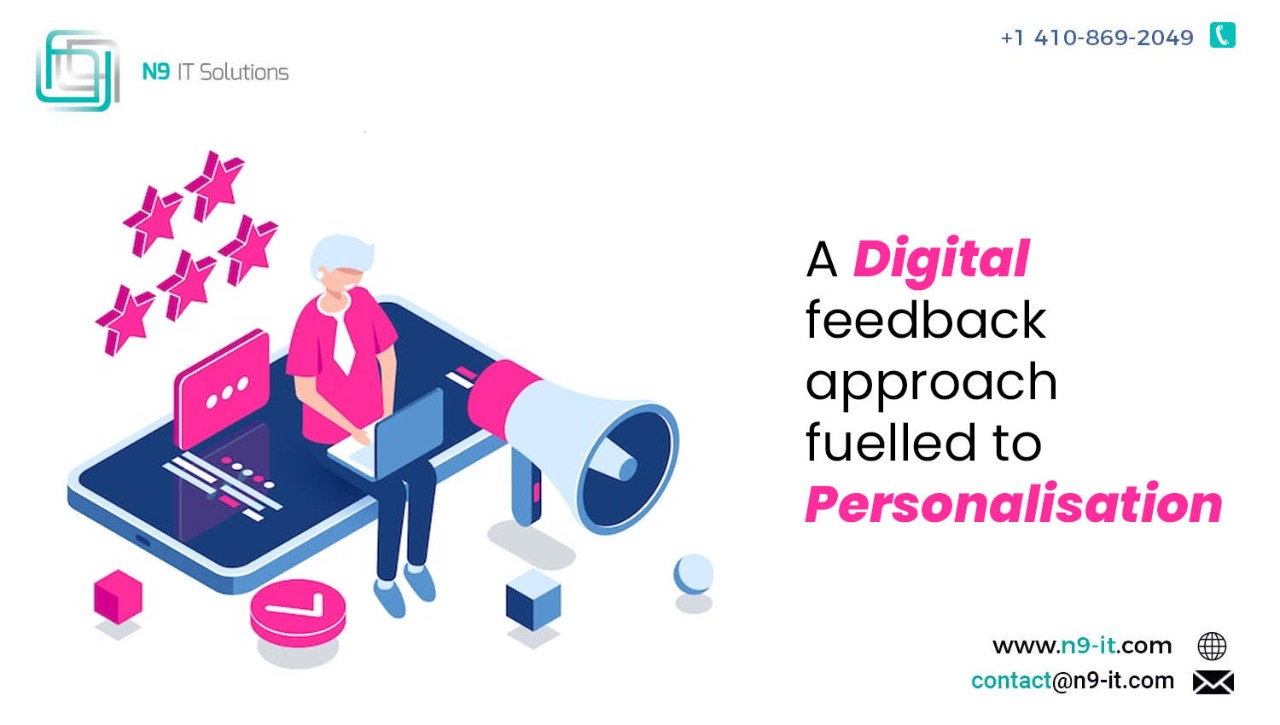A Digital feedback approach fuelled to personalisation
“Personalisation is the future of business”.
What is personalisation?
Personalization comes in when customers are attracted to brands that feel like they listen to them, understand them, and pay attention to their specific wants and needs. It’s a way for brands to place the messages, offers, and experiences they deliver, according to each visitor’s unique profile.
TechTarget defines personalisation as a “means of meeting the customer’s needs more effectively and efficiently, making interactions faster and easier, and consequently, increasing customer satisfaction and the likelihood of repeat visits”.
Digital feedback:
Getting feedback from the customers is a great way to build the product or service, and an easy way to grow the business. It can inform us whether a product or service is falling short of our customers' expectations and allow us to modify or change it. Digital feedback helps us listen to our customers and let them know they've been heard.
Customer expectations:
Customer expectation comprises everything that a customer expects from a product, service or organisation. It is created in the minds of customers based upon their individual experiences, knowledge and information they gathered from different sources.
Managing the customers’ expectations is very challenging. Clients and customers will have their own expectations of your business or organisation, and it changes over a period of time and demanding indeed. Today’s customers are more knowledgeable and more critical than ever before.
Types of expectations:
How to manage the customer expectations?
- Don't be afraid, to tell the truth.
- Adapt how you speak to your customers.
- Go where your customers are going.
- Make sure your customer service team is well prepared.
- Be as flexible as possible.
- Listen to what your customers are saying.
Right customer data and the right technology:
Customer data is defined as the information your customers provide while interacting with your business via your website, mobile applications, surveys, social media, marketing campaigns, and other online and offline avenues. Customer data is a cornerstone of a successful business strategy. It offers key information about the customers' habits: their tastes, preferences, and way of thinking. Ensuring the accuracy of your customer data is essential for the success of your marketing efforts. Accurate customer data not only boosts your marketing efforts but also prevents waste of time and monetary resources. Even if you are in some other part of the world, digital technology allows you to connect with them and work remotely. You can communicate using words, audio, video, and other media. Software, Websites, and apps have all been developed to assist users in socializing. Choose an apt one to satisfy your customer.
Upgrading the Technology with the Advancement of Environments like DevOps and Jenkins
Customer feedback:
Customer feedback is information, insights, issues, and input shared by customers about their experience with a product or service or a company. Customer feedback is important because it serves as a guiding resource for the growth of your company. Its purpose is to reveal their level of satisfaction and help product, customer success, and marketing teams understand where there is room for improvement.
Monitor customer goals &customer loyalty:
To ensure customers are achieving their online goals, it’s important to monitor certain parts of their browsing journey. This varies from industry to industry. For example, in online purchases, the focus should be on personalising the purchasing process, whereas, in the travel industry, the customer will be able to book a ticket. Two popular metrics used are CES and GCR.
Customer Effort Score (CES) is a single-item metric that measures how much effort a customer has to exert to get an issue resolved, a request fulfilled, a product purchased/returned or a question answered.
CES surveys typically ask the question- “on a scale of ‘very easy’ to ‘very difficult, how easy was it to interact with the company.” The idea is to find out whether the customers are more loyal to a product or service that is easier to use.
The CES score is calculated by finding the average of all responses. This means, taking the total sum of responses and dividing it by the total number of survey respondents.
Goal Completion Rate is the count of the number of visitors who have completed all components of a goal, divided by the total number of visitors. A goal is considered complete only when a lead or customer completes all actions associated with the goal.
Plan of action:
All that’s left is to start taking these combined insights and putting them into action. These two types of data strengthen each other. Not only they help us to contextualise our feedback and allow us to pinpoint which customers are struggling to reach their online goals and which customers are most likely less loyal, but they will also guide us in providing our customers with a more relevant and personalised user experience in both the short and long-run.
- N9 IT Solutions is a leading IT development and consulting firm providing a broad array of customized solutions to clients throughout the United States.
- It got established primarily with an aim to provide consulting and IT services in today’s dynamic environment.
- N9 IT also offers consulting services in many emerging areas like Java/J2ee, Cloud Computing, Database Solutions, DevOps, ERP, Mobility, Big Data, Application Development, Infrastructure Managed Services, Quality Assurance and Testing.
WE ARE HIRING ALL GRADUATES
Share your profile to resumes@n9-it.com

